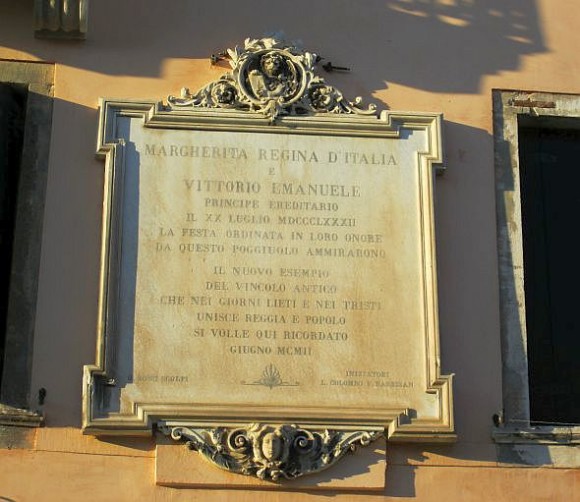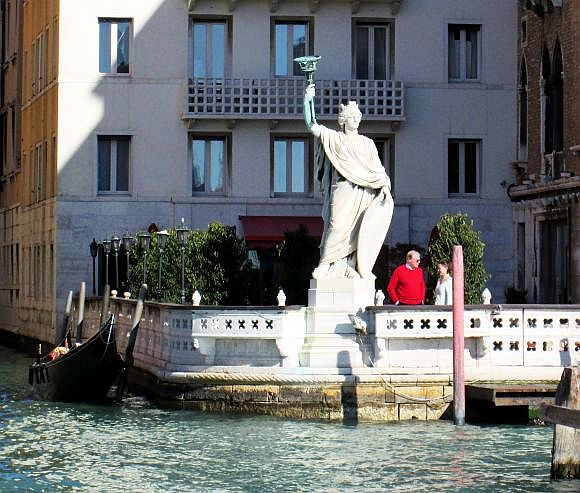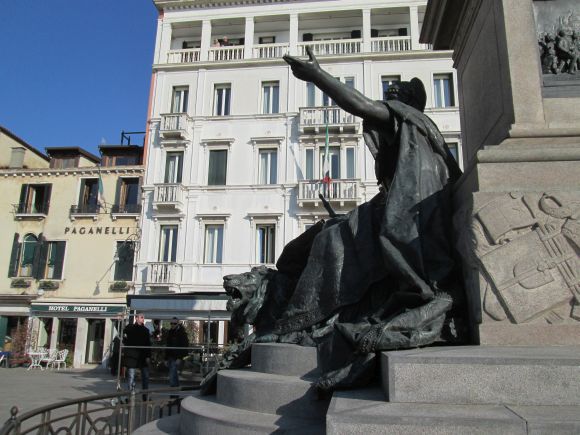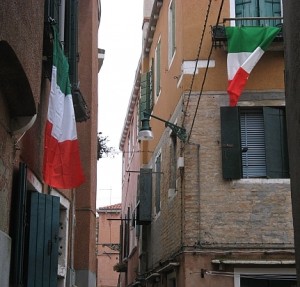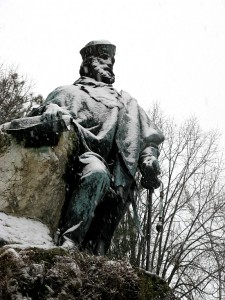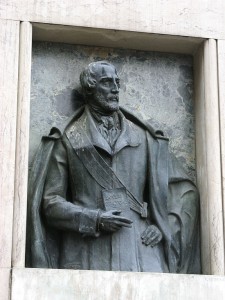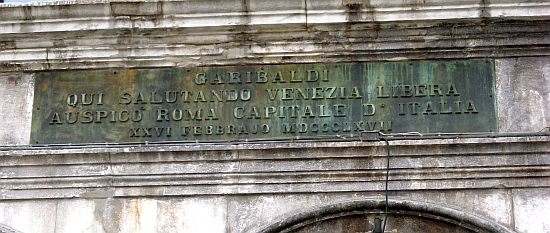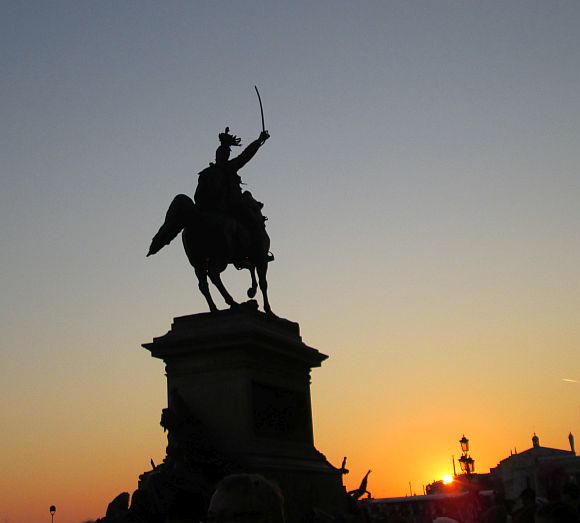
As anyone who has ever walked along the Riva degli Schiavoni knows, there is a honking big statue in the middle of the street.
Many (most? all?) countries can boast imposing effigies of men on horseback, usually brandishing a saber, or their hat, or maybe a banner. Brandishing, anyway.
Considering that, in the case of the mounted man on the Riva, nobody has seen fit to provide even the tiniest clue as to who he is, you’ve probably been satisfied to surmise that somewhere, at some time, this man did something bronzeworthy..
Then you take pictures of the more memorable lions, and move on.
But for anyone who would, in fact, like to know what’s up with all these characters, I am ready to reveal all. And my excuse is the date, June 2, which is a national holiday known as the Festa della Repubblica, or Republic Day. Although the man relates only inversely to the event (more on that below), I’m exploiting this occasion because there isn’t another one around that fits him any better.
The swordbearing cavalier is King Vittorio Emanuele II (also known as the “Father of the Fatherland”), and he was the first king of the newly created nation of Italy. Clicking on that link will spare us slowing down for a reprise of most of the details; the “juice” of the subject, as they put it here, is that in 1861 Italy pulled itself together to form one nation out of many assorted mini-nations, duchies, and kingdoms.
The pulling-together process was long, toilsome, and often extremely bloody. Then the newly-minted Italians, having established the Kingdom of Italy on March 17, 1861, had to find a ruler. The mantle fell on the aforementioned Vittorio Emanuele, a member of the House of Savoy (one of the oldest ruling families in Europe), who was already King of Sardinia and, more important, had been a major participant in the Unification process.
Some of the main events which led to this moment, with several Venetian codicils, are depicted in nearly insane detail on the monument, as follows:
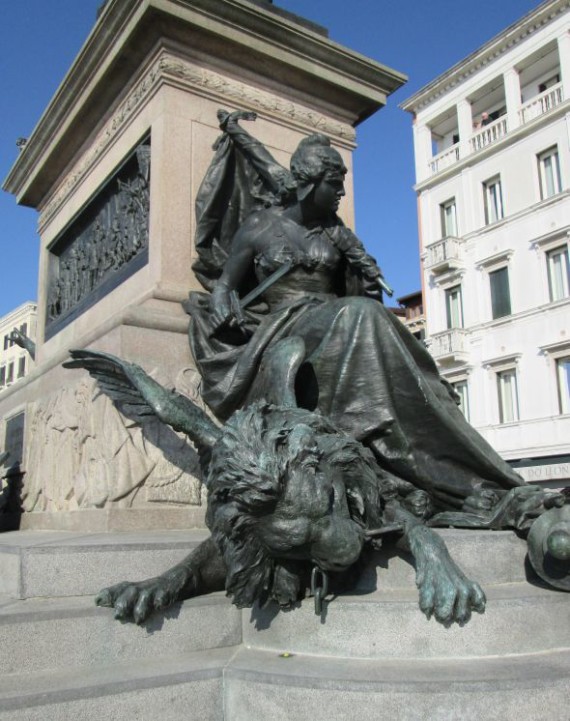
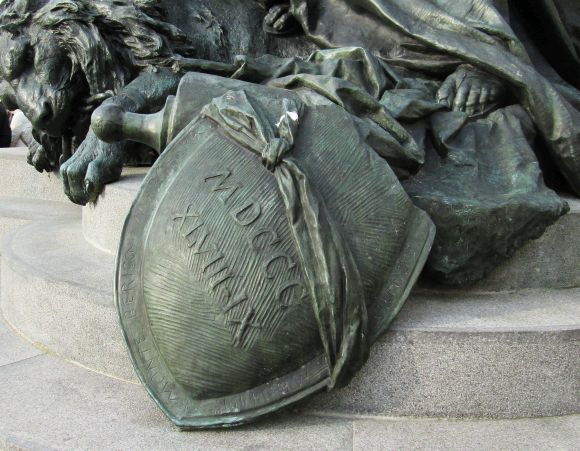
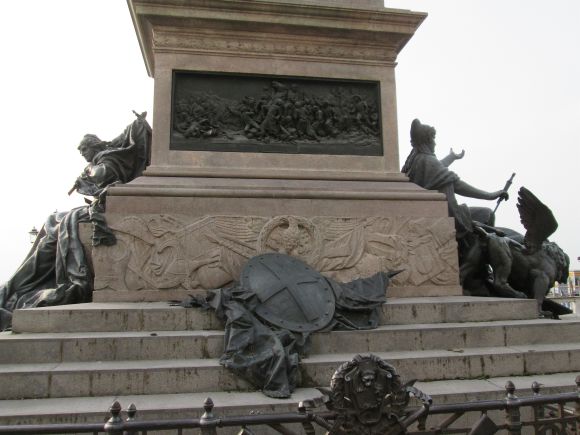
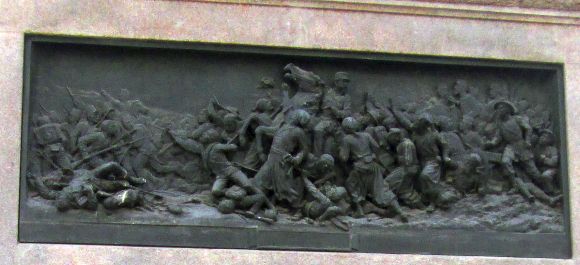
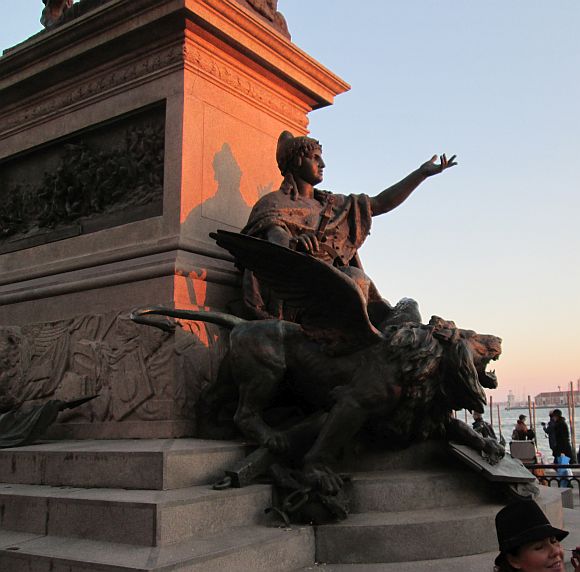
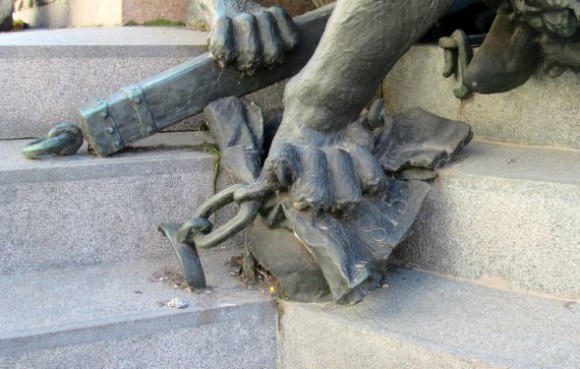
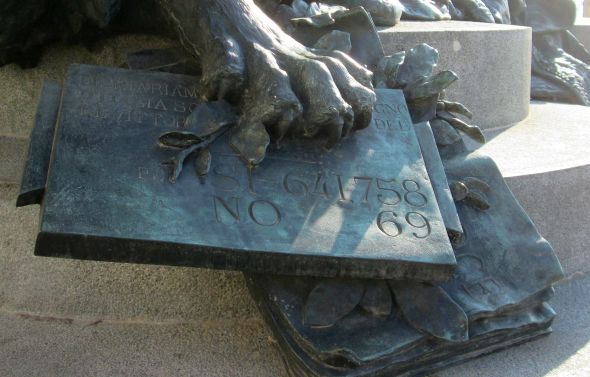
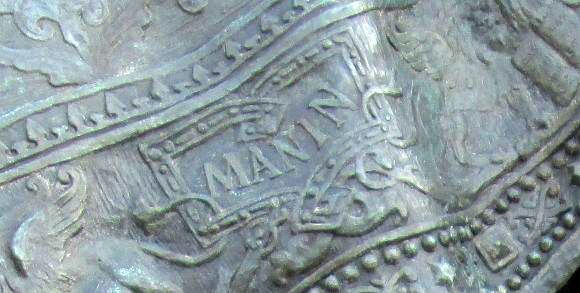
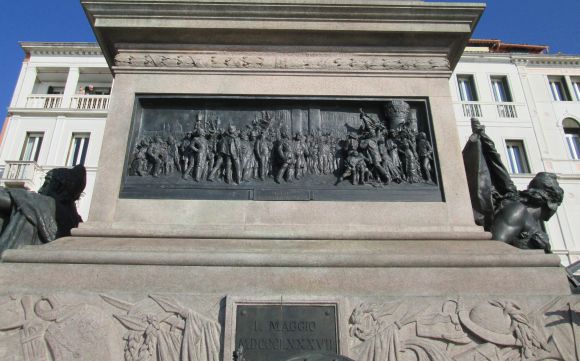
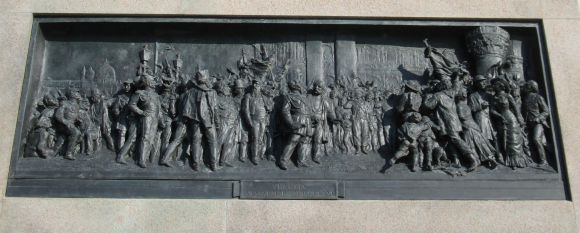

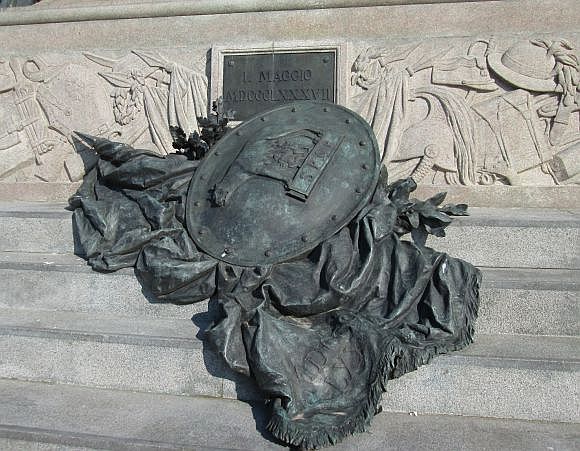

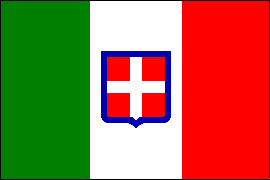
I mentioned above that I’m writing this on Republic Day, even though the king relates to it only inversely. I say that because after 85 years of kings, the Italian people went to the polls on June 2, 1946 and voted to replace him with a republic. That’s one impressive job-performance evaluation.
Furthermore, the king and his entire family were sent into exile, which demonstrates some prudence on the part of the new government, considering that 54 percent (almost all in the North) had voted for a republic but 45 per cent voted to keep the monarchy (almost all in the South). There are a few characters around Venice who still make a point of putting out the royal flag on certain occasions. It’s a vain gesture; the Italian Constitution forbids the reinstatement of a monarchy by constitutional amendment. The only way to bring back a king would be to write a completely new constitution. This is not on anybody’s to-do list.
In any case, if there were to be a new king, he couldn’t come from the House of Savoy, as the Savoyards formally renounced their claim to the (non-existent) throne in 2002 in return for being permitted to set foot in Italy again, should the mood strike.
But the statue remains, and even if nobody now recognizes who it is on the horse, it served a very important purpose in its time. Statues of Vittorio Emanuele II and his co-divinity, Giuseppe Garibaldi, began to appear in many places after Unification. The reason, as so aptly and famously put by contemporary statesman Massimo d’Azeglio, was “Now that Italy has been made, we need to make the Italians.”
You wake up one morning and you’re an Italian. What is that supposed to mean? Statues of the two major protagonists were one way of focusing public attention on the new reality and the new identity.
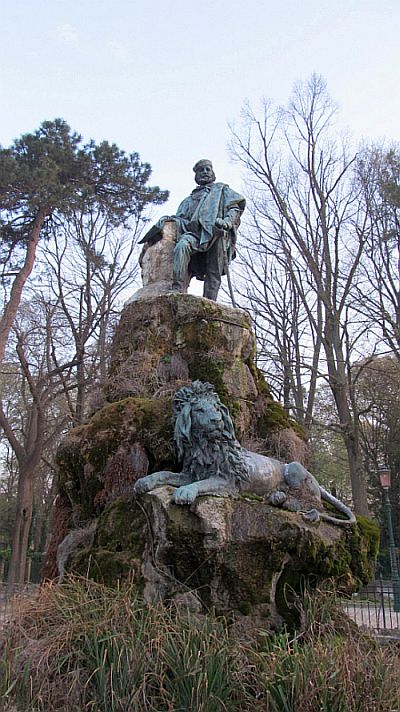
“To transmit the … sense of a common past and present identity … effectively, urban space became re-defined for the political realities of the late nineteenth century. Public commemorations became widespread, especially through the erection of monuments and plaques, and the re-naming of streets. Their inauguration ceremonies encouraged the collective participation in the spectacle of the ‘imagined’ nation. Personality cults which glorified national figures such as King Vittorio Emanuele II and Giuseppe Garibaldi were perceived as important tools in the nation-building process.” (Laura Parker, “Identity, memory, and la diarchia di bronzo, Commemorating Vittorio Emanuele II and Giuseppe Garibaldi in post-Risorgimento Venice.”)
I close with some trivia, which as everyone knows, I never consider trivial.


